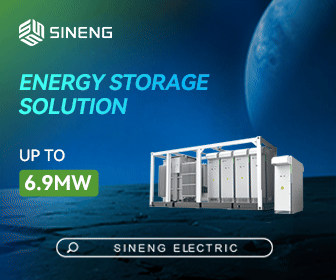Electromobility: New Ultra-Fast, High-Precision Process for Single-sheet Electrode Stacking in High-Performance Batteries
Prismatic battery cells with flat coils have proven themselves in practice and see wide use in electric cars made by German au-tomakers these days. In the future, it will also be possible to stack rather than wind the electrode strips in the cell. This saves space and creates a more homogeneous cell structure with enhanced cell properties. Researchers and the industry are now aiming to establish this promising manufacturing technology in Germany. The pilot production line for lithium-ion cells at the Centre for So-lar Energy and Hydrogen Research Baden Württemberg (ZSW) in Ulm is able to assemble prismatic cells with wound electrodes (PHEV-1 format) in a fully automated workflow. It will also be equipped with advanced stacking technology as part of a new project slated to kick off in January 2018.
Called STACK, this project is aimed to develop an ultra-fast manufac-turing process using a new production line and new materials. The scientists at ZSW intend to deploy a high-tech stacker and a new sep-arator to produce and evaluate sample cells on an industrial scale. The project will focus on comparing wound cells with stacked cells in PHEV-1 format. Manz and Freudenberg are on board as the ZSW's industrial partners.
Prof. Werner Tillmetz, a member of ZSW's board of directors and head of the Electrochemical Energy Technologies division, says, "The e-mobility boom has led to major bottlenecks in global production capaci-ties for lithium-ion cells. Our pilot production line offers a unique re-search platform for the industry to develop manufacturing processes of its own. The new STACK project will enable companies to add stack-ing technology to their portfolio and take the next step towards cost-effective mass production of large Li-ion cells."
There are advantages to stacking rather than winding electrodes for rectangular cell formats. A stacked cell has a very homogeneous struc-ture and makes better use of the space in the housing, or hard case. This improves cell capacity, longevity and safety compared to wound lithium-ion cells. One drawback of single-sheet stacking is the lower throughput of mass manufacturing systems available today. Winding assembly lines are two to six times as fast. Also, the materials in large-format cells are flexible, which makes it difficult to stack the individual electrode sheets precisely at very high speeds. This presents an enormous engineering challenge.
Up with throughput
The partners in this project aim to rectify this shortcoming and demon-strate the improved properties of cell stacked in comparison with those of legacy lithium-ion cells. ZSW's scientists will support this endeavor by analyzing and testing cells, as well as providing a fully automated cell assembly line. The thrust of this effort goes to accelerate through-put and enhance precision, two factors that determine production costs and product yield in commercial battery manufacturing. The research-ers intend to use a high-tech stacker and a new type of separator to produce and evaluate sample cells on an industrial scale. The focus is on comparing wound cells with stacked cells in PHEV-1 format. This cell format comes in solid, rectangular aluminum hard cases preferred by many automakers. One variant of this format, PHEV-1, is particular-ly well suited for plug-in hybrid electric vehicles.
Every step in the industrial lithium-ion cell manufacturing process has an impact on cell performance, quality and costs. ZSW set up FPL, a research platform for industrial manufacturing of large lithium-ion bat-teries (see the info box for more on this), in 2014 to methodically ex-plore this interplay and share its findings with all players in Germany. Its scientists have since investigated a wide range of manufacturing-related issues in industry and research initiatives to develop equip-ment, improve individual steps in the manufacturing process and look into quality assurance procedures. ZSW is the only facility of its kind with the production lines to conduct this research under much the same conditions as in factories.
The STACK project's protagonists will make the most of this foolproof testing environment and plant operation know-how to establish a new assembly process. A new separator designed to meet the challenging demands for high-speed manufacturing will figure prominently in this effort. The scientists have 30 years' experience researching materials and the full analysis toolset to draw on when comparing wound and stacked lithium-ion cells' electrochemical properties. Stacked sample cells are to undergo exhaustive electrical and mechanical testing and CT X-ray scans in the battery test center, a proven facility that has been used by the industry for many years.
The industry is on board
The industry partner Manz AG, a maker of lithium-ion battery manufac-turing systems, and Freudenberg Performance Materials SE & Co. KG, a material supplier that has worked extensively with separators, are taking also part. The STACK research project is to run for three years with the Federal Ministry for Education and Research (BMBF) provid-ing €2.7 million in funding. It started in January of 2018.
Analysts expect the market for e-car battery cells to skyrocket, with global sales of automotive cells exceeding €50 billion by 2025. Mas-sive investments in new production lines around the world will be nec-essary to deliver this kind of volume. According to projections, it will take more than ten giga fabs with around 400 gigawatt hours of cell capacity to meet demand, and over €50 billion in investments to gear production up to that level.
ZSW Laboratory for Battery Technology | www.zsw-bw.de









